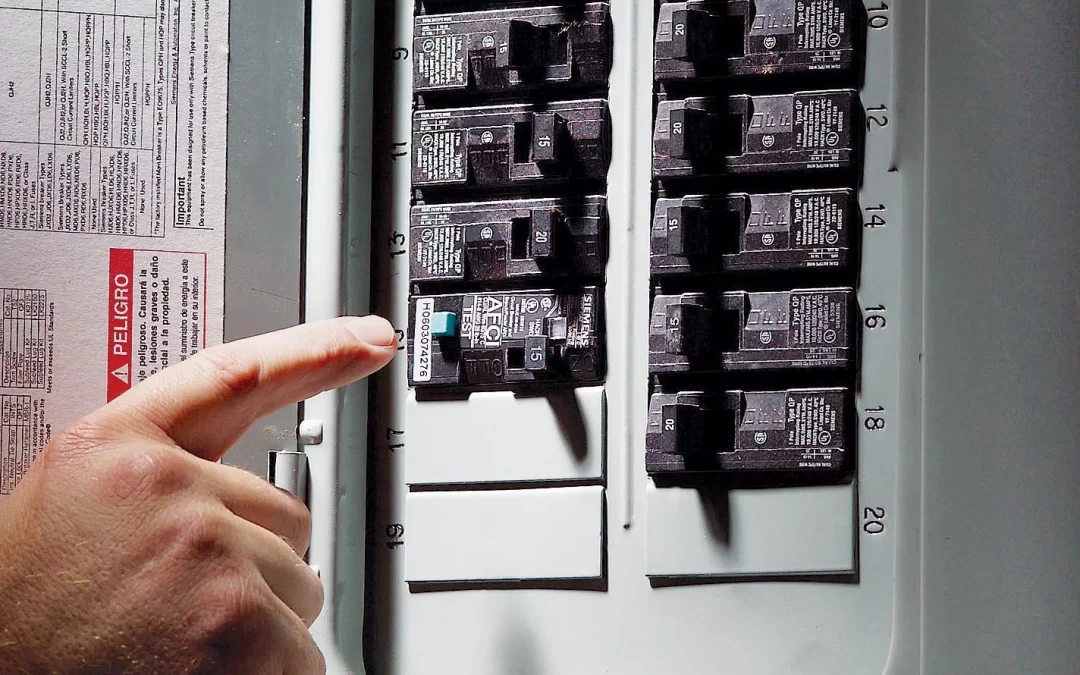Circuit breakers are essentially resettable fuses that are automatically operated electrical switches that cut off the circuit whenever the current jumps above a safe level, avoiding overheating, melting, and potential fires. Both have pros and cons associated with them. A fuse is generally more cost-effective and is considered to be more reliable, as it does have any moving parts. A circuit breaker, on the other hand, doesn’t have to be replaced after every overload and is easier to handle safely. While it’s extremely unlikely, there have been cases of it jamming and failing to cut off the circuit.
What is a breaker?
The circuit breaker is an essential device in the modern world, and one of the most important safety mechanisms in your home. Whenever electrical wiring in a building has too much current flowing through it, these simple machines cut the power until somebody can fix the problem. Without circuit breakers (or the alternative, fuses), household electricity would be impractical because of the potential for fires and other mayhem resulting from simple wiring problems and equipment failures.
In many cases, one brand of breaker can fit in another brand of panel, but that doesn’t mean that you should use them interchangeably. Always install the correct brand of breakers on your breaker panel. Replacing a brand of breaker with another can be dangerous and may void your breaker or panel warranty.
Electricity
In this article, we’ll find out how circuit breakers and fuses monitor electrical current and how they cut off the power when current levels get too high. As we’ll see, the circuit breaker is an incredibly simple solution to a potentially deadly problem. To understand circuit breakers, it helps to know how household electricity works.
Electricity is defined by three major attributes:
- Voltage: the “pressure” that makes an electric charge move.
- Current: the charge’s “flow” — the rate at which the charge moves through the conductor, measured at any particular point.
- Resistance: The conductor offers a certain amount resistance to this flow, which varies depending on the conductor’s composition and size.
Voltage, current, and resistance are all interrelated. You can’t change one without changing another. Current is equal to voltage divided by resistance (commonly written as I = v/r. This makes intuitive sense: If you increase the pressure working on electric charge or decrease the resistance, more charge will flow. If you decrease pressure or increase resistance, less charge will flow.
Electricity
Electricity cannot be stored. The power distribution grid delivers electricity from a power plant to your house. Inside your house, the electric charge moves in a large circuit, which is composed of many smaller circuits. One end of the circuit, the hot wire, leads to the power plant. The other end, called the neutral wire, leads to the ground. Because the hot wire connects to a high energy source, and the neutral wire connects to an electrically neutral source (the earth), there is a voltage across the circuit — charge moves whenever the circuit is closed. The current is said to be alternating current because it rapidly changes direction.
The power distribution grid delivers electricity at a consistent voltage (120 and 240 volts in the United States), but resistance (and therefore current) varies in a house. All of the different light bulbs and electrical appliances offer a certain amount of resistance, also described as the load. This resistance is what makes the appliance work. A light bulb, for example, has a filament inside that is very resistant to flowing charge. The charge has to work hard to move along, which heats up the filament, causing it to glow.
In building wiring, the hot wire and the neutral wire never touch directly. The charge running through the circuit always passes through an appliance, which acts as a resistor. In this way, the electrical resistance in appliances limits how much charge can flow through a circuit (with a constant voltage and a constant resistance, the current must also be constant). Appliances are designed to keep current at a relatively low level for safety purposes. Too much charge flowing through a circuit at a particular time would heat the appliance’s wires and the building’s wiring to unsafe levels, possibly causing a fire.
Electrical System
This keeps the electrical system running smoothly most of the time. But occasionally, something will connect the hot wire directly to the neutral wire or something else leading to ground. For example, a fan motor might overheat and melt, fusing the hot and neutral wires together. Or someone might drive a nail into the wall, accidentally puncturing one of the power lines. When the hot wire is connected directly to ground, there is minimal resistance in the circuit, so the voltage pushes a huge amount of charge through the wire. If this continues, the wires can overheat and start a fire.
Contact us
Hiring a professional electrician is the safest way to install outdoor lights. Mikulka Electricians are always professional and efficient. Insured and trained to do the job right the first time. Experts in the field of electrics with over 25 years’ experience. Prepared with up-front pricing and a lifetime guarantee. We observe all personal protective equipment and COVID 19 requirements to keep our staff and your family safe. Our team of experts will respond immediately to your call for help. Call Mikulka Electric, Inc. for a wide range of electrical services, including indoor and outdoor lighting, electrical heating, electrical repairs, and back-up generators. We service the Central New Jersey area. Address 275 RT. 79 Morganville, NJ 07751 https://mikulka-electric.com/contact-us/
Phone 855-645-8552 or 855-MIKULKA

